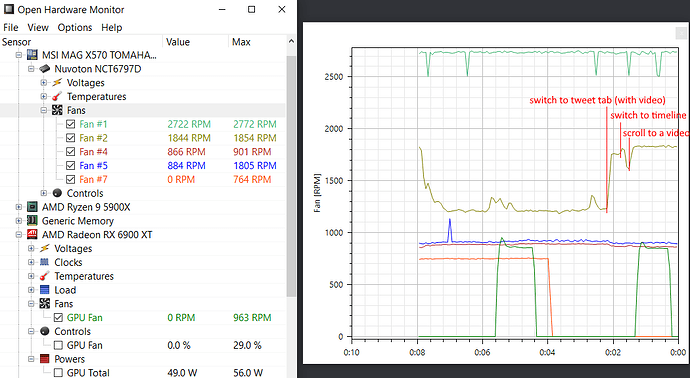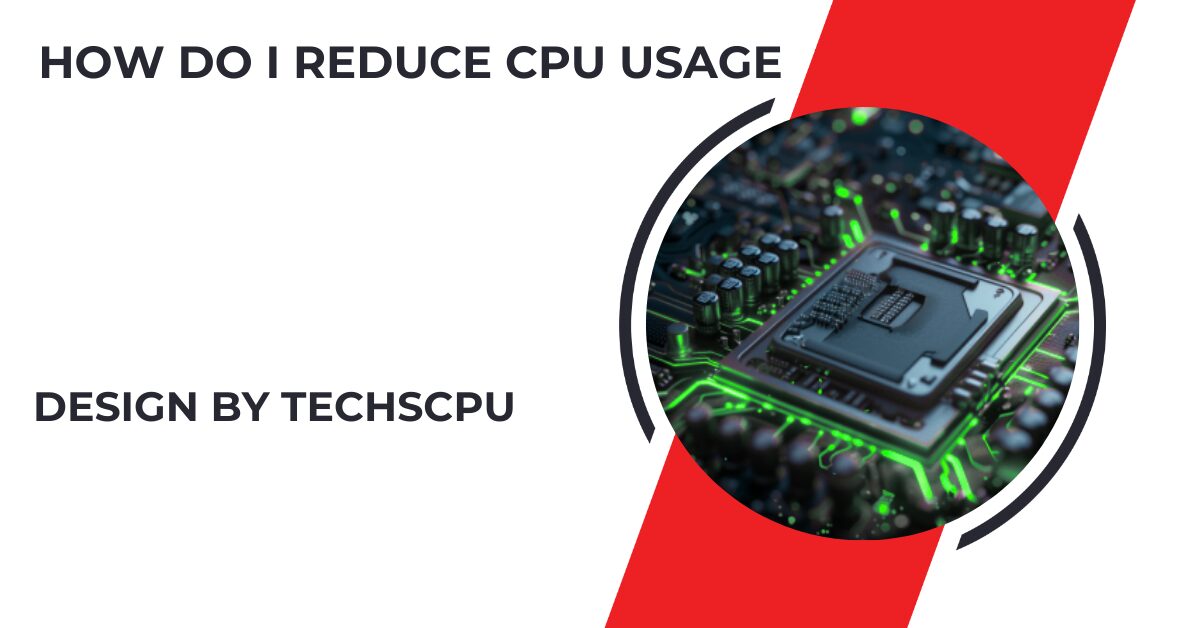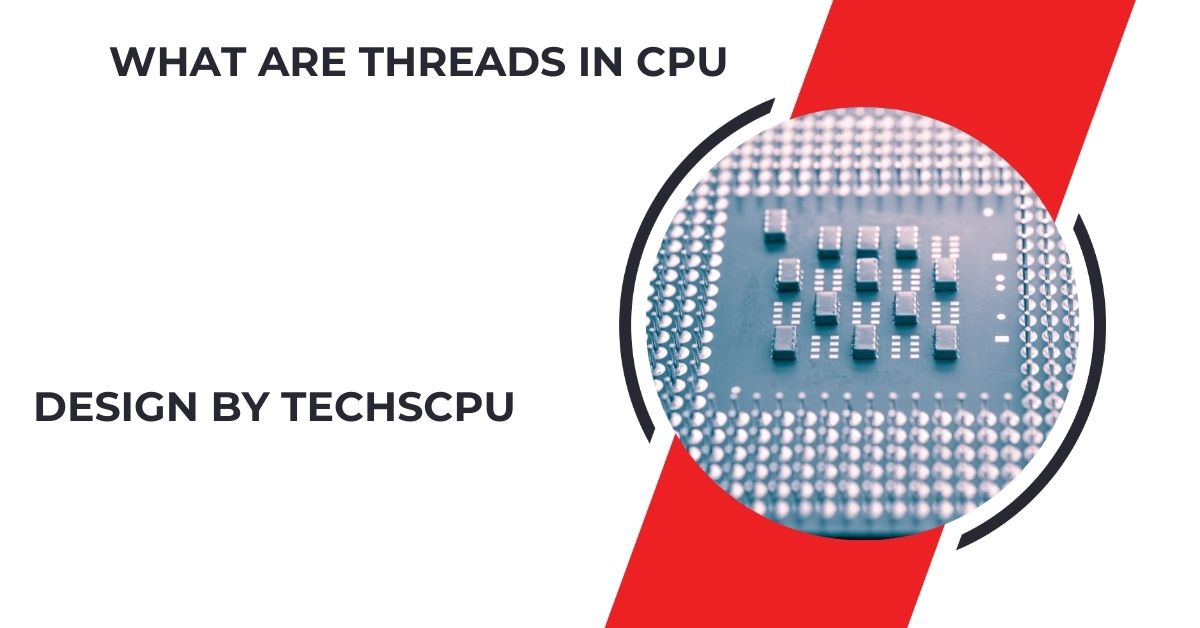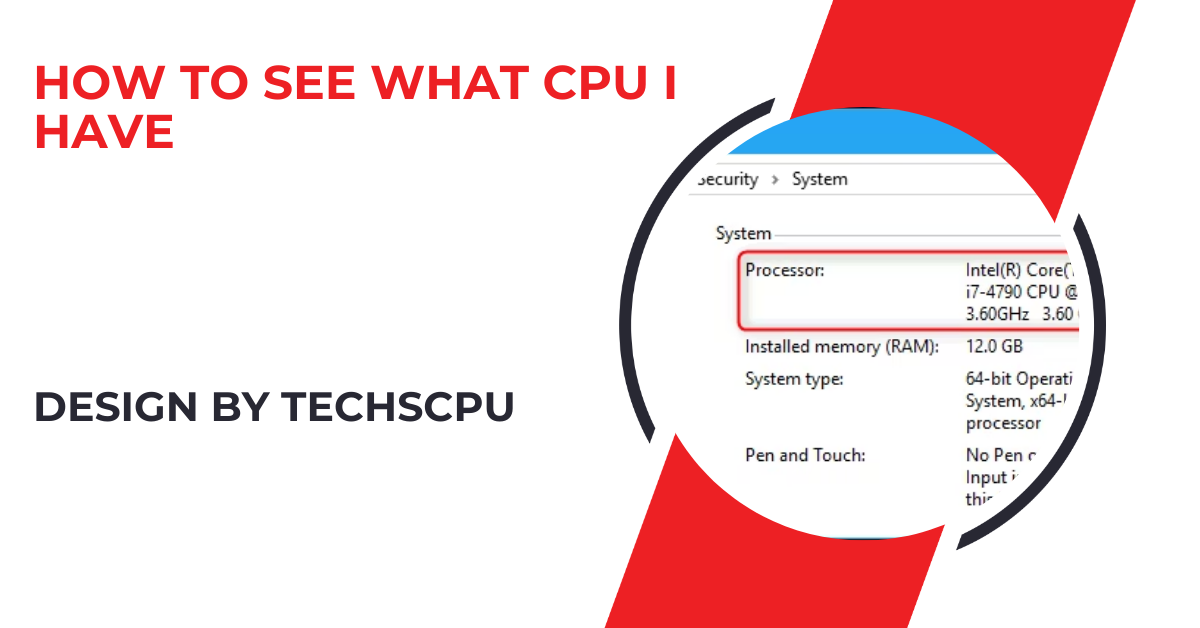How Do I Reduce Cpu Usage – A Complete Guide!
To reduce CPU usage, close unnecessary programs, disable startup applications, scan for malware, update software, limit browser tabs, and consider hardware upgrades.
In this guide, we will explore simple steps you can take to reduce CPU usage, keep your system running smoothly, and improve overall performance.
What is CPU Usage?

The CPU (Central Processing Unit) is the brain of your computer, responsible for executing tasks. CPU usage refers to the percentage of CPU capacity being used by programs at any given time. High CPU usage can slow down your system, cause overheating, and even lead to computer crashes, reducing the overall efficiency of your machine.
Why Is High CPU Usage a Problem?
High CPU usage can severely slow down your system, making tasks take longer and affecting your workflow. Over time, it can cause your computer to overheat, which might damage internal components. If your CPU is constantly overworked, it can cause freezing, random crashes, or even permanent data loss, disrupting your work significantly.
How to Check CPU Usage:
Monitoring CPU usage is essential to prevent system issues before they escalate. Both Windows and macOS have built-in tools that allow users to track CPU usage in real-time. By monitoring CPU usage, you can identify applications consuming too many resources and take steps to reduce their load, improving system performance and avoiding potential slowdowns or crashes.
Also read: How To Apply Thermal Paste To Cpu – A Complete Guide!
Windows:
On Windows, check CPU usage by pressing Ctrl + Shift + Esc to open Task Manager. Navigate to the Performance tab to view real-time CPU usage. To identify specific programs causing high CPU consumption, go to the Processes tab and sort applications by CPU usage. This helps you manage and close resource-heavy apps more effectively.
macOS:

For macOS users, open Activity Monitor via Spotlight (press Cmd + Space). In the CPU tab, you can see current CPU usage and identify which applications are consuming the most CPU power. Sorting applications by CPU usage helps pinpoint resource-heavy apps, allowing you to close or optimize them for smoother system performance.
Common Causes of High CPU Usage:
High CPU usage can result from various factors, including running multiple programs, malware, or outdated software. Understanding the causes helps in managing resources better, preventing system slowdowns, and maintaining smooth operation. Addressing these issues ensures improved performance and avoids CPU overload, which can significantly affect the responsiveness and speed of your computer.
Running Too Many Programs:
Running multiple programs at the same time places significant strain on your CPU. Each application consumes CPU resources, and using resource-heavy applications like video editing software or games can push your CPU to its limit. Closing unused programs frees up CPU power, improving overall system performance and reducing the chances of slowdowns or crashes.
Also read: How To Undervolt Cpu Gigabyte Bios – A Comprehensive Guide!
Background Processes:
Background processes, such as updates, syncing services, and maintenance tasks, can silently consume CPU resources. Over time, these processes accumulate, increasing CPU usage even when you’re not actively using the computer. Regularly checking and managing background processes helps prevent excessive CPU usage and ensures smoother system operation.
Malware or Viruses:

Malware and viruses can run undetected in the background, consuming significant CPU power. These malicious programs may slow down your computer and increase CPU usage. Regular antivirus scans help detect and remove malware, ensuring your system is secure and freeing up valuable CPU resources for necessary tasks.
Outdated Software:
Outdated software can lead to inefficient CPU usage due to bugs or lack of optimization. Old program versions might consume more CPU power than necessary. By regularly updating your software, you ensure that it runs more efficiently, reducing strain on your CPU and improving the overall performance of your system.
System Updates:
System updates, while essential for security and performance, can temporarily increase CPU usage when they run in the background. These updates slow down your computer while being installed. To minimize disruptions, it’s best to allow updates to complete during periods when you’re not using your computer for critical tasks.
Also read: Intel Lga 1700 Socket Cpu List – A Comprehensive Guide!
How to Reduce CPU Usage:
Reducing CPU usage can be achieved through simple steps that free up system resources. Managing active programs, updating software, and minimizing unnecessary background activities can significantly lower CPU load. These strategies will ensure your computer runs more smoothly, delivering faster and more responsive performance, enhancing your overall user experience.
Close Unnecessary Programs:

Closing programs that are not actively in use is a simple way to reduce CPU load. Many applications run in the background and consume CPU resources, even when idle. By shutting down these programs, your CPU can focus on tasks that matter, leading to improved system performance and reduced overall CPU usage, allowing your computer to operate more efficiently.
Disable Startup Programs:
Many programs automatically launch when your computer starts, contributing to high CPU usage from the outset. Disabling unnecessary startup programs through Task Manager (Windows) or System Preferences (macOS) reduces CPU strain during boot-up. This leaves only critical programs, like antivirus software, running, improving overall system responsiveness and freeing up CPU power for essential tasks.
Scan for Malware:
Malware can run hidden processes in the background that drain CPU resources. Performing regular antivirus scans helps identify and remove these harmful programs, freeing up CPU power and improving overall system performance. Routine scans not only boost your computer’s efficiency but also safeguard its security, ensuring that it operates without unnecessary strain.
Also read: What Is A Core In A Cpu – A Complete Guide!
Update Software:
Outdated software can be a source of inefficient CPU usage due to bugs and lack of optimization. Regularly updating your operating system and applications ensures they run more efficiently, reducing CPU load. These updates often come with performance improvements, helping to lower CPU usage and making your computer run faster and smoother overall.
Limit Browser Tabs:

Browsers can be CPU-intensive, especially when you have multiple tabs open. Each tab consumes CPU resources, so closing unused ones helps reduce CPU load. Extensions like OneTab can also group tabs, further reducing strain on your system. By limiting open tabs, you free up CPU power, making your browsing experience faster and more efficient.
Reduce Visual Effects:
Visual effects, such as animations and transparency, use significant CPU power. Disabling or reducing these effects helps lower CPU usage without affecting essential functionality. On both Windows and macOS, you can easily adjust system settings to minimize visual effects, freeing up valuable CPU resources to handle more important tasks and improve overall system speed.
Upgrade Hardware:
If CPU usage remains consistently high after applying software solutions, it may be time to consider a hardware upgrade. Adding more RAM or upgrading to a faster CPU can greatly improve your system’s ability to handle resource-heavy applications, especially during multitasking. This reduces CPU strain, leading to smoother performance and better overall system efficiency.
Also read: How To Check Your Cpu Temp – A Detailed Overview!
Advanced Methods for Reducing CPU Usage:
For more experienced users, advanced techniques can optimize CPU usage effectively. These methods require adjusting system settings and offer significant improvements when done correctly. While these techniques involve some technical knowledge, they can help reduce CPU strain, improve performance, and enhance the overall efficiency of your computer.
Adjust Power Settings:

Power settings influence how your CPU operates. Switching to a power-saving mode can reduce CPU usage by preventing it from running at maximum capacity during light tasks. While performance may decrease slightly, this setting helps lower CPU strain, reduce heat generation, and extend your computer’s lifespan, especially during less demanding activities.
Disable Unnecessary Services:
Operating systems run several background services, some of which may not be essential. Disabling unnecessary services can free up CPU resources, improving system performance. However, caution is necessary when turning off services, as some are vital for system functionality. It’s recommended to disable only those services that won’t affect critical system operations.
Adjust Virtual Memory:
Increasing virtual memory allows your system to use a portion of your hard drive as additional RAM, reducing CPU strain, especially for older systems with limited RAM. Adjusting virtual memory settings can improve overall performance by offering more resources for demanding tasks, helping lower CPU usage and enhance system responsiveness.
FAQ’s
1. What is CPU usage?
CPU usage is the percentage of processing capacity used by programs at any time. High CPU usage can slow down your computer and lead to crashes.
2. Why is high CPU usage a problem?
High CPU usage can slow down your system, cause overheating, and lead to random crashes or data loss, negatively impacting performance.
3. How can I check CPU usage on Windows?
Press Ctrl + Shift + Esc to open Task Manager and view CPU usage under the Performance tab or check the Processes tab for individual applications.
4. How do I reduce CPU usage on my computer?
Close unnecessary programs, disable startup applications, regularly scan for malware, update your software, and limit browser tabs to lower CPU usage.
5. What are advanced methods to reduce CPU usage?
Advanced methods include adjusting power settings, disabling unnecessary services, and increasing virtual memory to optimize CPU performance further.
Conclusion
In conclusion, reducing CPU usage is essential for maintaining optimal system performance and preventing issues like overheating and crashes. Users can effectively lower CPU strain by closing unnecessary programs, disabling startup applications, and keeping software updated. By implementing these strategies, individuals can enjoy a smoother computing experience while also extending the lifespan of their hardware for long-term reliability and efficiency.



